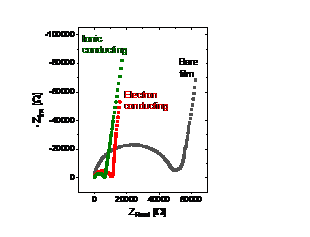
A protein based thin film with mixed ionic and electronic conductivity
Conduction of electricity in living organism occurs mostly using ions, while in conducting materials conduction occurs mainly using electrons. Interfacing this two system natural and synthetic through distinct ionic electronic conduction is challenging. Also, ionic-electronic conductors need to be coupled at the interface in order to detect the signal from the living organism. For that purpose, synthetic organic polymers are used, in which these polymers are non-biodegradable in nature and produces tons of waste each year. Here, we have developed a new material having electronic as well as ionic conductivity using proteins as building blocks. We are using one of the most affordable protein of bovine serum albumin (BSA), which is one of the main side products of the bovine industry. We have developed a single pot method of taking the raw protein and to self-assemble it into a free-standing, self-supporting, insoluble and transparent film at room temperature. Using simple chemical modifications, we can control both the electronic conduction as well as the ionic conduction of the material, approaching conductivity levels of common conductive ionomers. Our method can be considered as a breakthrough in the field, as it is very easy to form (no need of synthesis), very cheap material, and due to the biological nature of the material, it is also biocompatible and biodegradable.

Figure- Impedance response of doped (red and green) and non-doped film (gray).
Powered by Eventact EMS